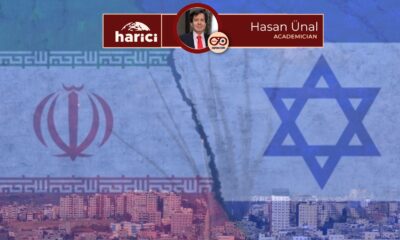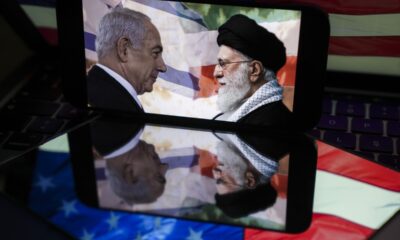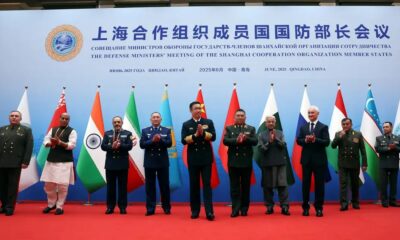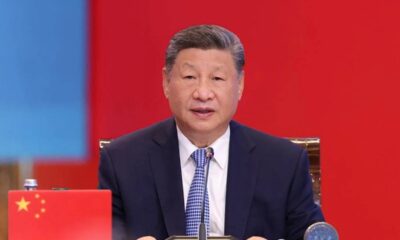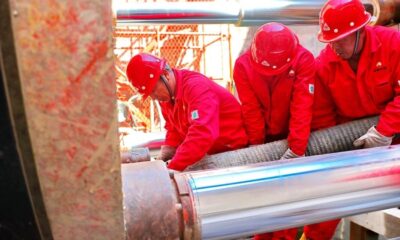Russia
A year that shook the global system
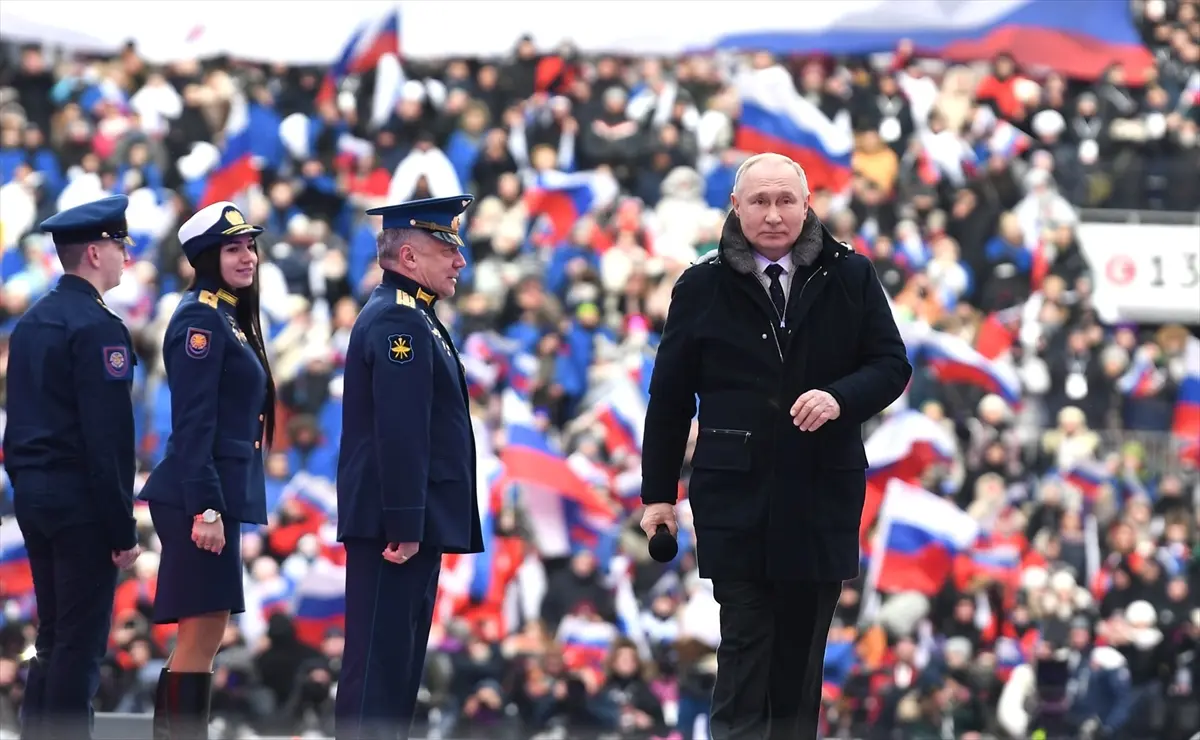
It has been a year since February 24th. The long history of the Russian-Ukrainian tensions has been marked by a year of hot conflict. While the parties did not give up on their strategic goals, the door of a long period of uncertainty was opened in which the global system skidded and shook.
On February 24, 2022, Russian leader Vladimir Putin announced the launch of a “special operation” and led the Russian army into Ukraine. Thus, the long-standing Russia-Ukraine tensions, in other words, the mistrust between the West and Russia, has moved to another level.
The security mechanisms established with Europe and NATO after the Cold War and the Minsk I and Minsk II agreements, which are the address of the search for a solution to the crisis in Ukraine, have lost their historical meaning. It remains unclear how this new page will be closed and how the European security order will take shape in the aftermath of this war.
“This is a European war,” said Prof. Dr. Vişne Korkmaz, “There are vehicles of various sizes on this military and political battlefield. We are on a crowded floor. We are not in the same situation as we were in 1945.”
“The fight started on a crowded field,” Korkmaz said, noting that arm wrestling over the global system could continue for a long time in line with the parties’ own agendas.
What was Russia’s goal?
The Russo-Ukrainian war, or “special military operation” as Moscow calls it, began as a result of a failure to meet the security guarantees demanded by Russia from the United States and NATO, and in total from the Atlantic world. The Western system, led by the United States, responded to Moscow’s intensified insistence in the last quarter of 2021 on “security guarantees”, the story of which dates back to the end of the Cold War, by further arming Ukraine.
For decision-makers in the Kremlin, this meant ignoring Russia as a great power. Dialogue mechanisms and protocols aimed at softening the conflicts and finding a solution were now “a diversionary tactic used by the West to further arm Ukraine” for Moscow.
Nisantasi University Faculty Member Prof. Dr. Vişne Korkmaz sees the historic decision on February 24th as a “mistake” for Moscow and adds “this conflict is also about shaping European security.”
Evaluating the one-year war process to Harici, Korkmaz said, “Russia had two goals. Converting the post-Cold War European Security architecture to a point where it would be more advantageous. They failed to accomplish this without war. The West did not give Russia what it wanted in this sense. Russia became a party to the conventional European war. Secondly, we were aware of the conventional power of Russia. Russia was a great power, but not quite. Russia wanted to become a great power. Status is a position granted by the parties to you. Russia could not come close to achieving these two goals, but I do not see a war that Russia has lost yet. The facts of the field do not show a complete loss.”
How to disrupt the pat situation on the field?
“We are not evaluating the fronts of a war that ended like the Second World War. We are currently following an open conflict between two asymmetrical forces: this is a European war!” Korkmaz emphasized the lively, dynamic and variable aspect of the process.
Korkmaz assessed that the reality on the field could change if Ukraine sweeps the Russian forces from its territory or if Russia changes its strategic objectives, and said that she does not see such a possibility for the time being.
“It is a strange war, a war that can be continued. It will probably take longer. There are unknowns,” Korkmaz said, adding that both Russia and the West have made miscalculations.
“There is a deadlock for Russia that it has not given up on. I do not think it will revise its strategic goals. It has not even revised its tactical goals. It has not given up on its demands regarding the security future of the EU,” Korkmaz summarized Moscow’s current situation and added “The West also made a mistake, thinking that Russia could be isolated very easily. Russia has to continue in a way that brings it closer to its strategic goals. Moscow could not be pushed out of the system globally. It is not easy to keep a great power out of the system.”
What is the situation on the Western Front?
Referring to the “different voices” that emerge from time to time in the West, Korkmaz said, “Everyone has a different purpose. Each purpose has its own unique schedule. We are talking about a long struggle with different stages.”
Stating that it was a “struggle over the global system unlike the Cold War”, Korkmaz said, “Europe was caught unprepared and followed the US. It could not create its own stance and means.”
For the state of Europe, Korkmaz noted, “There seems to be only one West. Different voices have died out. Europe had to adapt itself to the NATO and EU agenda because it was not prepared. That is why Europe did not speak out.”
Where and how will the war end?
While the Istanbul process and the People’s Republic of China’s 12-point plan stand out as concrete efforts to resolve the crisis, there has yet to be a strong will to bring the parties to the negotiating table. The West is currently busy arming Ukraine, and Russia is reportedly preparing for a frontal offensive.
“I do not think Russia will test ‘NATO’ deterrence. There is a real risk that the war will spread to areas outside the NATO umbrella, such as Moldova,” Korkmaz said.
According to Prof. Dr. Korkmaz the United States has begun to move more towards the Asian front regarding its global goals. At this point, “The United States has been targeting China in particular recently. The message given through Ukraine is directed at China. The United States have more time for China,” she said and commented “The West has succeeded in limiting Russia to the Ukraine war.”
Korkmaz thinks that “the peace plans do not offer much either,” adding, “We are still in a deep stalemate. Russia has not lost totally.” Stating that although the “Ukrainian resistance” has been successful so far, Kiev is also far from winning, Korkmaz argued that a long-term struggle is a reality.
For now, it seems impossible to predict where the gods of war will stop. What is certain is that the world has become too large to fit into its old mold and seems ready to establish a new security framework. It is necessary to see that peace can only be established around new concepts and with a new understanding.
A quote by the famous Italian Marxist Antonio Gramcsi summarizes the situation: “The old world is dying, and the new world struggles to be born: now is the time of monsters.”
Russia
China’s energy pivot: Power of Siberia 2 gains traction after Iran-Israel conflict
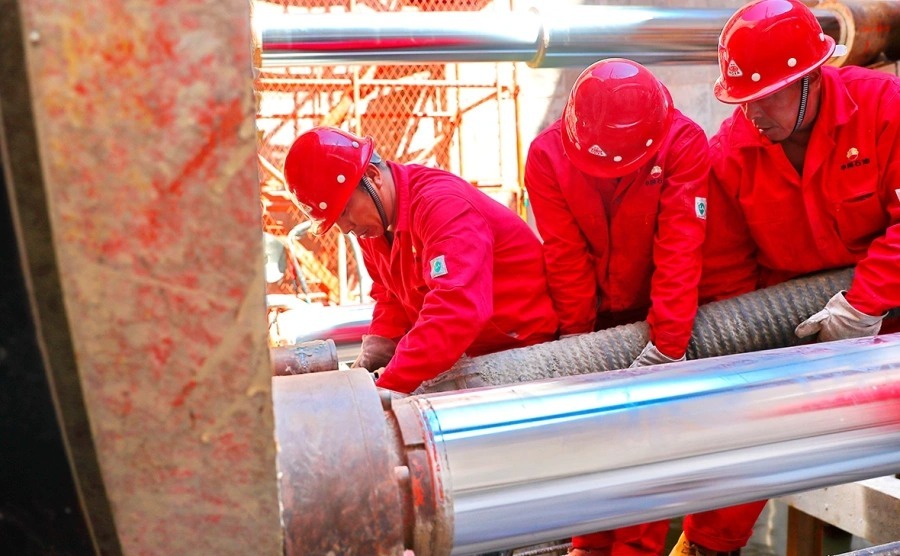
According to a report by The Wall Street Journal (WSJ), citing sources close to decision-making processes within the Chinese government, the recent conflict between Iran and Israel has heightened Beijing’s interest in Russia’s Power of Siberia 2 natural gas pipeline project.
The report indicated that Beijing, increasingly concerned about the reliability of oil and natural gas supplies from the Middle East, is exploring alternative energy sources.
Approximately one-third of China’s imported natural gas is supplied as liquefied natural gas (LNG) from the United Arab Emirates (UAE) and Qatar. These shipments traverse the Strait of Hormuz, a critical waterway that Iran has previously threatened to close. Furthermore, private Chinese refineries have reportedly become increasingly reliant on inexpensive Iranian oil in recent years.
According to analyst data, 90% of Iran’s oil exports are directed to China, despite US sanctions. Following the announcement of a ceasefire between Iran and Israel, US President Donald Trump stated, “Now China can continue to buy oil from Iran. I hope they buy a lot from the US as well.”
Price: The biggest hurdle in negotiations
Mid-month, Russian Deputy Prime Minister Alexander Novak affirmed the ongoing relevance and importance of the Power of Siberia 2 project within the framework of energy cooperation with China, in a statement to Vedomosti daily.
Design work for the Power of Siberia 2 pipeline commenced in 2020. The pipeline is planned to have a total length of approximately 6,700 kilometers, with 2,700 kilometers of this route passing through Russian territory.
However, Financial Times reported that the gas price proposed by China for future contracts has not satisfied the Russian side. According to the report, Beijing aims to purchase gas at a price nearly equivalent to Russia’s domestic market cost.
In response to these claims, the Chinese Foreign Ministry announced that Beijing is prepared to deepen mutually beneficial cooperation with Russia.
Russia
It is too early to assess the Iran-Israel ceasefire’s durability, says Lavrov

Russian Foreign Minister Sergey Lavrov, speaking at the Primakov Readings international forum, stated that the shifting approaches of Western leaders regarding Ukraine reflect the failure of their initial plans.
Lavrov noted that Moscow will wait for proposals from the West to mend relations, while emphasizing that it is still too early to make definitive comments on the permanence of the ceasefire between Iran and Israel.
The West’s slogans have evolved from ‘strategic defeat’ to unconditional ceasefire
Lavrov recalled that at the beginning of the military conflict, the West was “hysterically shouting” about the need to inflict a “strategic defeat on Russia on the battlefield.”
He noted that this slogan eventually changed to phrases like “Russia must not win in Ukraine,” and summarized the current situation as follows:
“Now, they are demanding, requesting, and even begging for an immediate, unconditional ceasefire. This is the very thing that Volodymyr Zelenskyy categorically rejected a few years ago when he was living and working under the banner of a strategic defeat on the battlefield.”
The minister observed that the fiasco of the West’s strategy and tactics is evident, but “Europe is still trying.”
Europe seeks negotiations
In May, French Foreign Minister Jean-Noël Barrot announced that European countries wish to be represented in potential Russia-Ukraine negotiations in Istanbul, following a proposed 30-day ceasefire by Kyiv and its allies.
Barrot stated that if Moscow refuses to cease fire, they expect the US and the European Union to increase pressure on Russia and impose extensive sanctions.
In contrast, US President Donald Trump has repeatedly avoided new anti-Russian sanctions, explaining that he did not want to jeopardize peace talks he believed were close to an agreement.
On June 20, following comments from Senator Lindsey Graham during his visit to Ukraine about his intention to advance a bill imposing a 500% secondary tariff on Russian energy sources, Trump warned that such statements should be chosen more carefully.
Kremlin Spokesman Dmitry Peskov stated on June 10 that there was no common ground for future agreements with Europe. Peskov attributed this to Europe being “focused on war for now” and showing no signs of seeking common ground with Russia.
‘Let them come with proposals when they realize their mistakes’
Lavrov also expressed that Russia expects proposals from Western countries to rebuild relations once the current “international arrogance” subsides.
Arguing that many countries have severed ties with Russia to the detriment of their own people, suffering enormous financial and reputational losses, Lavrov stated, “Let them come to us when they realize their mistakes and present their proposals, and we will decide based on our own interests.”
‘Too early to speak on the Iran-Israel ceasefire’
Addressing developments in the Middle East, Lavrov said it would be premature at this stage to draw final conclusions about the stability of the ceasefire reached between Iran and Israel.
Citing reports that the US persuaded Israel to agree to the ceasefire, with Qatar playing a similar role in negotiations with Tehran, Lavrov highlighted that news of rocket attacks from both sides continued to emerge after the ceasefire was declared.
“It is very difficult to form a complete picture of what is happening right now; the information is fragmented. We should not make hasty assessments,” Lavrov remarked.
The minister affirmed that Moscow supports any steps aimed at de-escalation and hopes for a long-term ceasefire, adding, “But we are for peace.”
On June 24, at 08:08 Turkish time, US President Donald Trump announced that the ceasefire between Iran and Israel had come into effect.
Before this announcement, Trump had stated that the parties had reached a “full agreement for a full ceasefire.” Iranian media also confirmed the ceasefire had taken effect.
However, at 10:58 Israel time, Defense Minister Israel Katz announced that Iran had violated the ceasefire agreement by launching two ballistic missiles.
Katz declared that he had instructed the Israeli army to “respond decisively to Iran’s ceasefire violation with intense strikes on regime targets in the heart of Tehran.”
Russia
Putin calls attacks on Iran unprovoked and unjustified aggression

Russian President Vladimir Putin, during a meeting with Iranian Foreign Minister Abbas Araghchi, described the attacks on Iran as “unprovoked aggression with no justification or basis.” In response, Araghchi thanked Russia for its condemnation, stating that the United States and Israel are responsible for the escalating tensions in the Middle East.
According to a statement from the Kremlin, Putin emphasized that Moscow is making efforts to assist the Iranian people. “We have long-standing, good, and reliable relations with Iran,” Putin remarked during the meeting.
Iranian Foreign Minister Araghchi expressed his gratitude to Russia “for its resolute condemnation of the actions of Israel and the US.” Stating that Russia is “on the right side,” Araghchi attributed the escalation of tensions in the Middle East to the actions of the US and Israel against Iran’s nuclear facilities. He noted that the Tehran administration considers the actions of the US and Israel on Iranian territory to be illegitimate, and therefore, Iran has the right to defend itself.
Araghchi also highlighted that Russia has always been a partner for Iran in the field of peaceful nuclear energy. He added that Moscow has played a positive role in negotiations regarding Tehran’s nuclear program.
During the meeting, Putin conveyed his best wishes to Iranian President Masoud Pezeshkian and Supreme Leader Ayatollah Ali Khamenei. Araghchi reciprocated with similar wishes on behalf of the Iranian leadership.
The Iran-Israel conflict escalated on June 13 when Israel launched an attack on Iran’s nuclear facilities, prompting Tehran to initiate retaliatory strikes. On June 22, the US struck Iran’s nuclear facilities in Fordow, Natanz, and Isfahan. President Trump warned that new attacks would follow if Tehran did not surrender.
Following the attacks, Russia, China, and Pakistan submitted a draft resolution to the United Nations Security Council condemning the aggression against Iran.
On June 20, Iranian Foreign Minister Araghchi met in Geneva with French Foreign Minister Jean-Noël Barrot, German Foreign Minister Johann Wadephul, and British Foreign Secretary David Lammy. Although the parties agreed to continue dialogue after the meeting, media reports indicated that no concrete results emerged from the discussions.
-
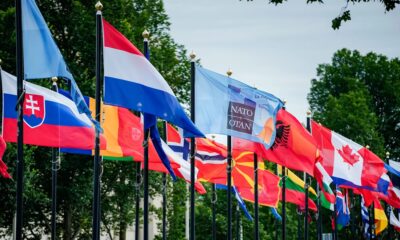
 Diplomacy2 weeks ago
Diplomacy2 weeks agoNATO summit focuses on arms race in the Silicon Valley age
-

 Europe2 weeks ago
Europe2 weeks agoIsrael-Iran conflict postpones EU plan for Russian oil sanctions
-
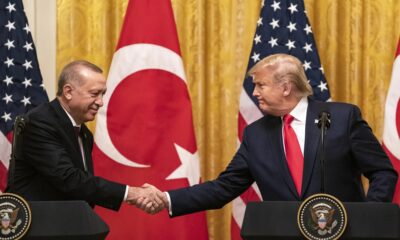
 Diplomacy2 weeks ago
Diplomacy2 weeks agoErdoğan to meet Trump at NATO summit to mend relations
-
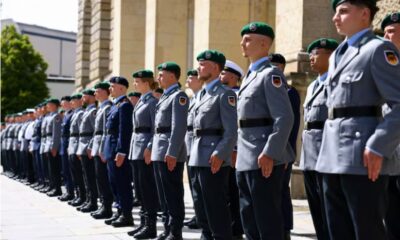
 Europe2 weeks ago
Europe2 weeks agoGermany to expand military with 11,000 new personnel this year
-

 Diplomacy2 weeks ago
Diplomacy2 weeks agoIranian foreign minister travels to Moscow for Putin talks after US strikes
-
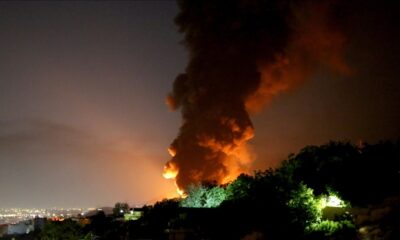
 Middle East2 weeks ago
Middle East2 weeks agoUS bombs Iranian nuclear sites, sparking fears of wider conflict
-
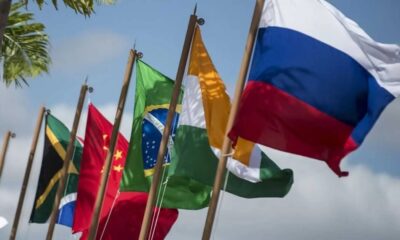
 Diplomacy2 weeks ago
Diplomacy2 weeks agoBRICS internal trade volume hits the $1 trillion mark
-
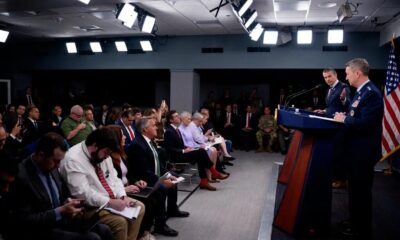
 America2 weeks ago
America2 weeks agoPentagon divided over military priorities in Asia and the Middle East


